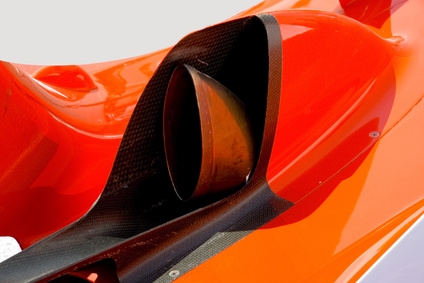
Today's exhaust system exits in one of two or three standardized locations, typically in or around the rear bumper. This wasn't always the case, though; many cars from the 1920s and '30s as well as a number of contemporary race cars and sports cars used fender-exit exhaust pipes. Such setups remain retro-cool and racy, but remember that safety always comes before style.
Exhaust pipes tend to exit from the rear bumper for two important reasons. The first is that exhaust gases are dangerous; keeping them away from the driver is of paramount importance for any exhaust install. The second major concern is that the gases coming out of the pipes are hot and dirty. Dirty isn't a problem if you don't mind soot marks on your bodywork (some people even like them), but those high-temperature gases can easily warp, melt and possibly ignite any combustibles in the way. This is especially true of front-fender exit exhausts, which can often spew flame under deceleration.
Fender-exit exhausts are fairly rare these days, because most car enthusiasts are understandably reluctant about cutting holes in their bodywork to duct the pipes. The biggest problem with any exhaust exiting through a hole is that the exhaust has to move, so the hole must be about an inch larger than the pipe diameter. Insert a piece of large-diameter exhaust tubing into the hole so that it extends three to four inches into the bodywork and surrounds the exhaust pipe. You can weld the pipe to the body, or you can weld it to an external plate and rivet the plate to the body. The former will require a great deal of bodywork and repainting; the latter is racier and easier for the average enthusiast.
Under no circumstance should you simply route individual tubes from a V-configured engine to the fenders on that side. Fender exhausts present one technical but immediately obvious problem: If the pipes exit on opposites side of the car, then you'll only ever hear one or the other. This can easily make a V-6 sound like a subcompact, a V-8 sound like a four cylinder or a V-10 sound less than robust. The solution is to use a crossover of some sort to blend the exhaust notes from both sides of the engine before exiting. An X-pipe will make more power and offer a smoother exhaust note, and an H-pipe will sound a little more rumbly.
Front-fender exhaust exits will almost always send a certain amount of exhaust gases into the cabin, but you can drastically reduce the amount by taking a few precautions. Obviously, the closer your exhaust exits are to the window the more gases will enter. The two best locations are just ahead of or just over the front wheel; angle the exhaust pipes out perfectly perpendicular to the body instead of back toward that cabin to reduce exhaust gas intrusion at idle and low speed. Perhaps the biggest trick is to install store-bought plastic wind deflectors around your front windows. At high speed you'll wind up driving through a wake of your own carbon monoxide, and these deflectors will help to keep most of it out of your car.